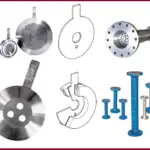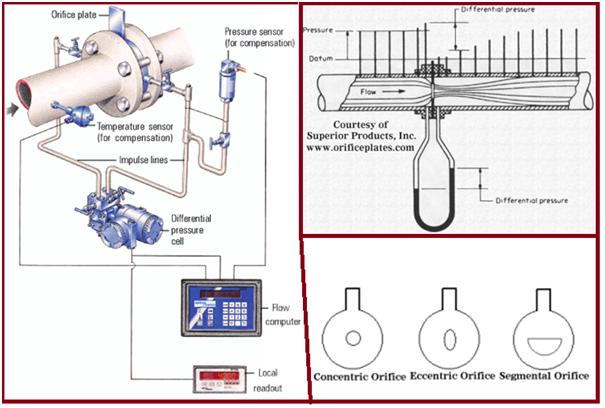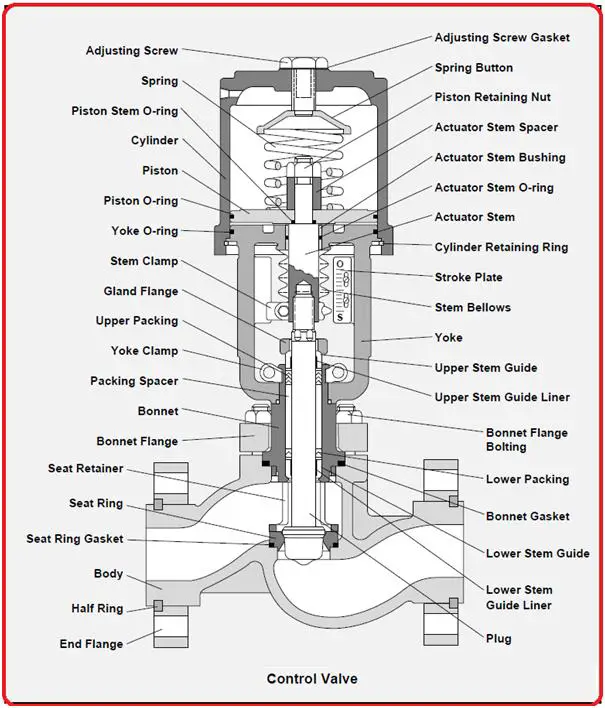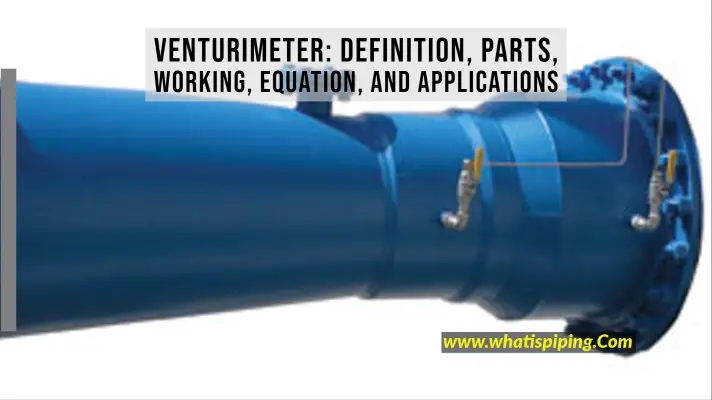A Throttling valve is a type of valve that can start, stop, and regulate the flow of fluid from one point to another. In general, there will be a high-pressure difference between the upstream and downstream sides of the throttle valve. The pressure drop increases with the increase in flow restriction inside the throttling valve. A range of control methods is used for controlling these types of valves. Different valves can work as throttling valves in different working conditions. In this article, we will learn about the basics of throttling valves.
Definition of a Throttling Valve
Throttling valves are valves used for opening, closing, or regulating a fluid flow. They are basically regulating valves as the discs of the throttling valves can regulate the flow, temperature, or pressure of the flow medium passing through it.
Examples of a Throttling Valve
Different valves can work as throttling valves. Some common examples of valves working as a throttling valves are:
- Diaphragm valve
- Butterfly valve
- Ball valve
- Globe valve
- Pinch valve
- Needle valve, etc
Control valves are specialized throttle valves. However, not all throttling valves are control valves.
Applications of Throttling Valves
Throttling valves are found to be used in a broad range of industries. Some of the common applications of throttling valves include:
- Refrigeration systems
- Air conditioning systems
- Steam applications
- Chemical applications
- Pharmaceutical applications
- Fuel oil systems
- High-temperature applications
- Food processing applications
- Automobile systems
- Power generation systems
- Metering systems
Working of a Throttling Valve
In a throttling valve, an obstruction is created inside the valve so that the parameters like flow velocity, temperature, pressure, etc are obtained as required. The flow is impacted by the designed restriction and friction generated while flowing. In general, the valve stem is raised or lowered to adjust the size of the flow path through the valve. They can even close the valve completely to stop the flow.
Common Valves used as Throttling Valves
All industrial valves are not throttle valves. The design of the valve must be proper to be used as a throttle valve. In general, the following valves are used as throttle valves:
Globe Valves:
Globe valve is one of the most popular throttle valves for industrial applications. The disk/plug of the globe valve provides the required restriction to work as a throttle valve so that only the required amount of media can pass through. However, globe valves require power or an automatic actuator for high-pressure applications.
Butterfly Valves:
The butterfly valve is the most suitable for throttling applications as it can easily create throttling by just opening a bit to allow the media to pass.
Gate Valves: Gate valves are generally not suitable for the throttling process.
Needle valves:
The needle valve is designed with a needle-like disk that moves to regulate the fluid flow. Needle valves are used as throttle valves for high-precision applications. Note that thicker and viscous media are not suitable for use as a throttle valve.
Pinch Valves:
Pinch valves are lightweight and easy to maintain and are used widely as throttle valves for sterility and sanitary applications. Due to the soft liner and smooth walls the pinch valves use, their best efficiency is 50%.
Diaphragm Valves
For moderate temperature and pressure applications, diaphragm valves can be a good choice for throttle valves.
Expansion Valves
Various expansion valves like manual expansion valves, thermal expansion valves, capillary expansion valves, and floating ball-type expansion valves are widely used as throttle valves for refrigeration systems.
Selecting the Throttle Valves for Specific Applications
The selection of throttle valves for a specific application is quite complex. There are various parameters that must be checked thoroughly to zero down on a specific valve to be used as a throttle valve. Some of these parameters on which the throttle valve selection depends are:
- Pressure drop required
- Range of flow control required
- Flow medium (gas or liquid)
- Design temperature and pressure.
- Purpose of the throttle valve
- Valve MOC
- Actuation required









Am young Auto mechanic and i need to extend my knowledge to meet with expert people to add something to brain
Very nice artical sir
And very helpful.
How we select the valve on the basis of various parametera like pressure, temperature,
Types of fluid
Flow consideration
And
Operating condition
Drawings and photos are great!